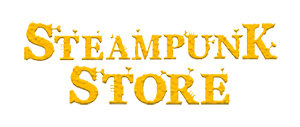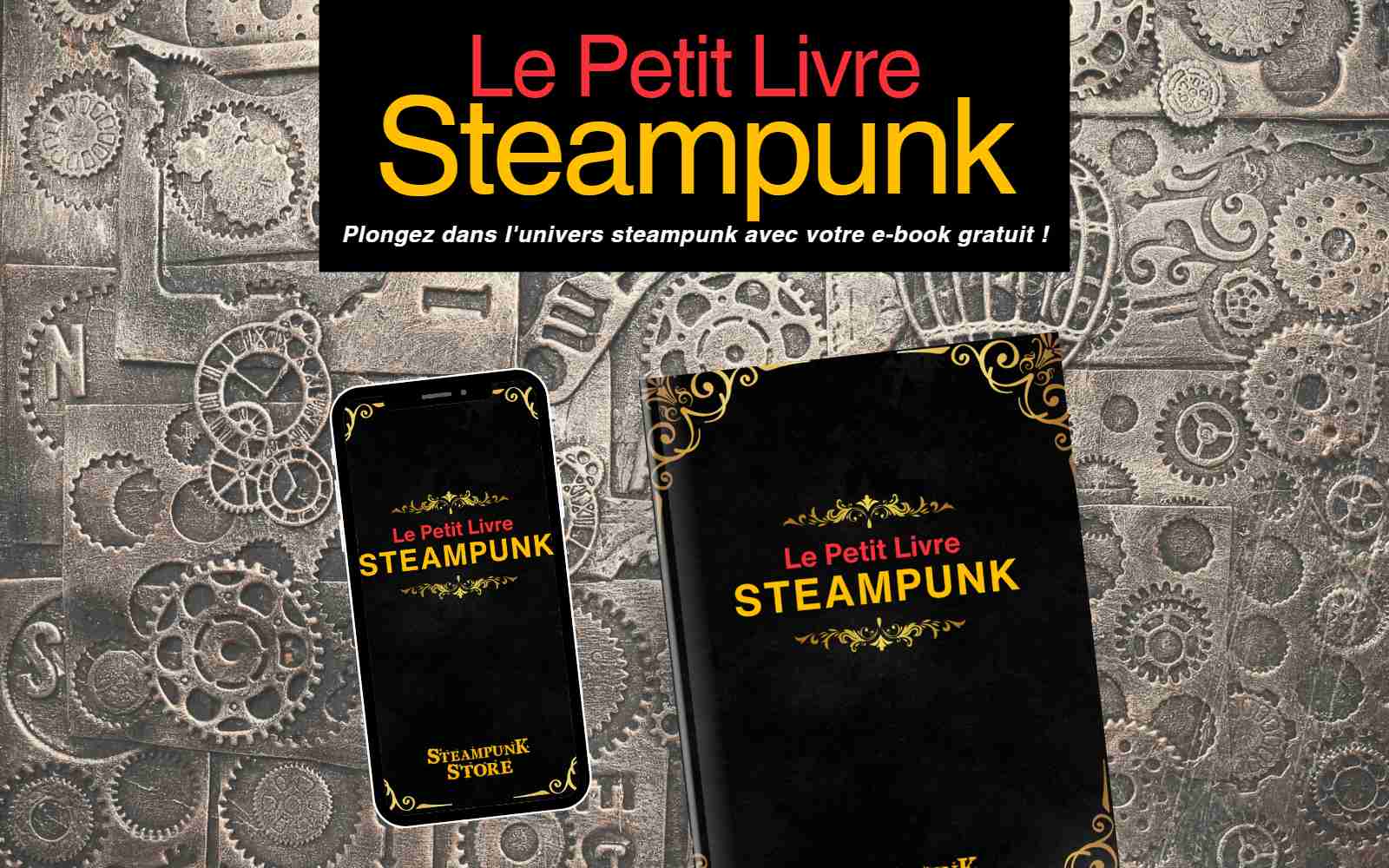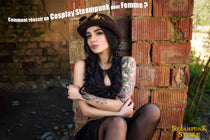Following our previous exploration on choosing your steampunk corset for Halloween, we must now examine the origins of this celebration with the critical eye of a clockwork mechanic! For indeed, dear readers, the commonly accepted history of Halloween functions like a defective mechanism, filled with poorly adjusted historical gears.

Key Points of this Mechanical Investigation
🎃 Celtic Origins: Halloween is often associated with Samhain, a Celtic festival marking summer's end, but historical details remain as nebulous as autumn mist.
📜 Roman Sources: Most information about druids comes from Romans, true masters of historical disinformation.
⛪ Christianization: The Catholic Church transformed numerous pagan festivals, including Samhain, into All Hallows' Eve, functioning as a mechanism of cultural appropriation.
📅 Variable Dates: All Saints' Day dates varied by region before being fixed to November 1st in the 12th century.
🕯️ Victorian Traditions: Victorian scholars popularized the idea that Halloween was an ancient pagan tradition, like clockmakers reinventing time itself.
🌾 Harvest Festivals: Many Halloween traditions stem from New World harvest celebrations.
👻 Irish Immigration: 19th-century Irish immigration played a crucial role in Halloween's rise in the United States.
🎭 Guising and Souling: These medieval British practices influenced modern "trick-or-treating" traditions.
📚 Victorian Literature: Victorian tales like "The Legend of Sleepy Hollow" helped shape Halloween imagery.
🎥 Horror Cinema: Classic horror films provided Halloween with its distinct visual vocabulary.
The Defective Machinery of Historical Evidence
Allow me, dear readers, to present the first defective component of this historical machine! We actually know very little about druids, their rituals, and practices due to their pre-literate culture. Most of what we claim to understand comes from the Romans—that imperial force upon whom we cannot rely for a complete and nuanced appreciation of cultures they sought to conquer, functioning like a perfectly oiled propaganda mechanism.
Definition: Halloween and Its Historical Mechanisms
Halloween designates a holiday celebrated on October 31st, supposedly inherited from the Celtic tradition of Samhain. However, this modern Halloween celebration actually constitutes a complex assemblage of medieval Christian traditions, New World harvest practices, and Victorian inventions, functioning as a remarkably sophisticated hybrid cultural mechanism.
It was the Romans who created the impression that mass human sacrifice was a common druidical practice—a mechanism of demonization. After the collapse of the Western Roman Empire, the Celts converted to Christianity. One can therefore admit there was a festival around Samhain, a term literally meaning "end of summer," but which wasn't necessarily the end of the Celtic year, like a misunderstood temporal gear.
The original practice of All Saints' Day varied from country to country like clockwork mechanisms from different artisans: November 1st in England and Germany, April 20th in Ireland, May 13th in most of the Christian world. The November 1st date wasn't established until the 12th century, well after Celtic christianization, demonstrating that this temporal synchronization was purely artificial!
Halloween: A Contemporary Invention of the Steampunk Era?
Granted, dear enthusiasts, this assertion may seem audacious! But remember that the fantastic occupies a place of honor in our steampunk universe—it's not just steam technology. More specifically, Halloween's association with Samhain, druids, and pre-Christian paganism appears to derive from 19th-century doctoral students in comparative mythology—these veritable clockmakers of collective imagination!
In "The Golden Bough: A Study in Magic and Religion," published in 1890, James Frazer makes numerous unfounded claims about ancient Celts and their customs by reinterpreting or misinterpreting Christian practices—like a mechanic repairing a clock with the wrong tools. In this case, all medieval Christian traditions that had developed around All Saints' Day were attributed to the Celts, as if grafting modern gears onto an ancient mechanism.
The practice of All Saints' Day essentially ended in Protestant countries, except for a modified form in Anglican and Lutheran territories. Remarkably: it was on October 31st, 1517, that Martin Luther nailed his 95 theses to the Castle Church door in Wittenberg, creating an ironic mechanism of historical coincidence! The head of the Church of England herself maintained a Halloween bonfire, as described in this fascinating 1874 chronicle at Balmoral Castle:
"Her Majesty and Princess Beatrice, each carrying a large torch, came out in an open phaeton. A procession, formed of estate workers and servants, followed. All carried tall, lit torches... When the flames were at their brightest, a person dressed in a jester's mask appeared on the scene, depicting a carriage surrounded by numerous fairies carrying long lances, the carriage bearing the effigy of a witch..."
America: Laboratory of a New Tradition
Dear readers, let us now examine how this tradition developed in the United States—like an experimental mechanism! Before the 1840s, mentions of Halloween in American literature were rare, especially in this Puritan society that had even banned Christmas. Most of the most striking American Halloween stories—like "The Legend of Sleepy Hollow" (1820) by Washington Irving—occur during a generic autumn harvest festival, not during a specifically Celtic celebration.
Irving nevertheless provides us with a remarkable description of an evolving American tradition—a veritable narrative machine! After the feast and dancing, participants gather for tales of old times, of heroes and ghosts, creating that particular atmosphere we associate with Halloween today:
"The immediate cause of the prevalence of supernatural stories in these regions was doubtless owing to the vicinity of Sleepy Hollow. There was a contagion in the very air that blew from that haunted region; it breathed forth an atmosphere of dreams and fancies infecting all the land..."

The Jack Legend: New World Mechanism
Modern Halloween celebrations' debt to harvest festivals of old is most clearly manifested in the Jack legend. Various tales of dubious authenticity attempt to connect the Jack O' Lantern to Irish folk tales, but the essential fact remains: the pumpkin is a New World vegetable! This pumpkin carving was practiced in the United States since the early 19th century as part of harvest festivals—a purely American decorative mechanism.
Irish Immigration: Fuel for the Halloween Machine
The tide turned in Halloween's favor with the Great Famine in Ireland and massive Irish immigration to the United States in the 1840s, functioning like steam injection into a previously dormant machine! This catastrophe, caused by potato disease, resulted in one million deaths and the exile of another million.

When the Irish diaspora arrived in America, their traditions accompanied them, including the Catholic feast of All Saints' Day. Halloween evolved from these freshly planted seeds as a distinctly Americanized holiday, much like St. Patrick's Day—a perfectly functioning mechanism of cultural adaptation!
Guising and Souling: Medieval Gearwork
With the Irish came the practices of "guising" and "souling"—veritable mechanical ancestors of modern "trick-or-treating"! These improvised theatrical pieces were short melodramas performed by costumed, itinerant actors on special festival days in the British Isles, dating to at least the 13th century.
Guising was the secular version, usually performed by children in costume who went door-to-door reciting verses, poems, and songs for apples, nuts, and coins—the veritable original mechanism of "trick-or-treating"!
America and the Birth of a Modern Tradition
While repeating common myths about Halloween's pagan origins, Ruth Edna Kelley's 1919 "The Book of Halloween" provides valuable insight into American celebrations of the previous century, functioning as a technical manual for this new festive machine:
"As the original Halloween customs were being more and more forgotten across the ocean, Americans encouraged them and made it an occasion similar to what it must have been in its best days abroad. All Halloween customs in the United States are borrowed directly or adapted from those of England under the reign of Queen Victoria."
Far now from the industrial revolution visible in the novels of Charles Dickens, where this holiday was already declining, Victorian America forged a new tradition with the precision of a clockmaker!

Halloween Atmospheres and Mechanical Superstitions
The decorations highlight this festival's two fundamental mechanical elements. For the table centerpiece, a hollowed pumpkin filled with apples, nuts, and other harvest fruits, or a wagon of pumpkins pulled by field mice—a veritable homage to Pomona's feasts! In the carriage sits a witch, representing the other element: magic and prophecy.
The Jack-o'-lantern pumpkins, with which the room is lit, are easy-to-carve pumpkins, hollowed with candles inside. Light shines through holes cut in the shape of features, creating these characteristic grimacing faces, like luminous plague masks!

This plague mask is a unique and original piece that will become the centerpiece of your steampunk Halloween outfit!
Toward a Commercial Holiday: The Industrialization of Halloween
It took time for traditions imported by the Irish to spread through American society—like a complex mechanism requiring careful break-in. The penchant for pranking and indulgence didn't serve the moral guardians of Victorian high society well.
The first reference to trick-or-treating by its more popular name comes from a 1927 newspaper article: "Halloween was the occasion for having fun to the full... The young executioners were at the back door and front and demanded edible loot by the word 'Trick-or-Treat' to which the inmates responded with glee." The term migrated to the United States in the 1930s, by which time this practice had become a cherished Halloween tradition.

Costumes became more widespread from the early century, and their development, contemporary with "Trick-or-Treating," coincides with the rise of the Horror genre in cinema. The advent of cinema, and Universal Studios' classic films in particular, gave horror a distinct visual vocabulary that endures to this day, functioning as a mechanism of collective imagery!

Conclusion: The Victorian Mechanics of Halloween
Dear fellow enthusiasts, our investigation reveals that Halloween constitutes an excellent example of an emergent tradition, assembled like a complex machine from multiple historical components! Its origins are manifold: New World harvest festivals, medieval religious celebrations, traditions imported by Irish immigrants, and local American customs.
These elements united into a distinct holiday in relatively recent times, but were legitimized by a false history dating back to pre-Christian times—like an antedated clockwork mechanism! Like Christmas before it, most of what we take for granted on October 31st was invented, more or less, in the early Victorian era.
This fascinating cultural machinery demonstrates that our most cherished traditions are often relatively recent inventions, dressed in the garb of antiquity to better seduce our thirst for authenticity. Halloween, far from being a Celtic vestige, constitutes a typical product of Victorian ingenuity—that same era that gave us steampunk and so many other mechanical marvels of imagination!
Explore our complete steampunk universe to celebrate Halloween in style, and discover our steampunk masks, our corsets, and our accessories to create a Halloween costume worthy of the Victorian era!
For remember, dear readers: in the steampunk universe as in Halloween's history, we don't simply celebrate ancient traditions—we forge mechanical legends that transcend time!
Sources and References
- Kelley, Ruth Edna. "The Book of Halloween" (1919)
- Frazer, James George. "The Golden Bough: A Study in Magic and Religion" (1890)
- Irving, Washington. "The Legend of Sleepy Hollow" (1820)
- Historical archives of Irish immigration to the United States
- Documentation on medieval British traditions
- Contemporary studies on the evolution of popular festivals
Eugenie Vaporette
Curator-consultant in steampunk aesthetics
Graduate in Victorian technology history











